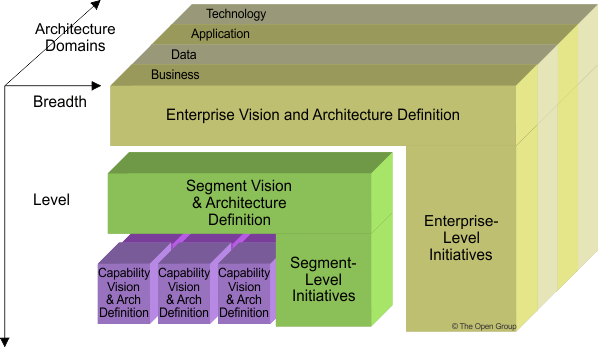Introduction
In the dynamic landscape of enterprise architecture, the need for seamless integration of diverse domains has become paramount. Organizations, in their pursuit of strategic alignment and operational efficiency, turn to robust frameworks to guide the integration process. One such beacon in the realm of enterprise architecture is the TOGAF Architecture Development Method (ADM). In this article, we delve into the intricacies of how TOGAF ADM, when coupled with the Architecture Content Framework, unveils a powerful meta-architecture framework.
This framework, encompassing principles, models, and standards, becomes the linchpin for achieving interoperability, migration, and conformance between federated architectures. Join us on a journey to understand how these tools empower architects to position components effectively, derive enterprise-level models, and define conformance standards that pave the way for maximum leverage and reusability. Welcome to the world where architecture integration is not just a necessity but a strategic imperative for organizational success.

Architecture Integration
Firstly, the mention of the TOGAF Architecture Content Framework is crucial. This framework can serve as a guide to position different domains and artifacts within the architecture. It provides a structured way to organize and relate these components, ensuring that the relationships between them are well-defined. This is essential for creating a cohesive understanding of how different components fit into the larger enterprise framework.
The use of a meta-architecture framework is also highlighted, emphasizing the importance of principles, models, and standards for interoperability, migration, and conformance. This meta-framework serves multiple purposes:
- Understanding Component Fit: By employing principles, models, and standards, architects can gain a clear understanding of how individual components fit into the overall framework. This ensures that each element aligns with the broader organizational goals.
- Focus on Enterprise-level Capabilities: Architectural models derived from this meta-framework should prioritize enterprise-level capabilities. This ensures that the architecture doesn’t just address immediate concerns but contributes to the overall strategic objectives of the organization.
- Defining Conformance Standards: The meta-architecture framework plays a crucial role in setting conformance standards. These standards enable seamless integration of components, promoting maximum leverage and reusability. This is vital for maintaining consistency and efficiency across different architectures.
Summary
TOGAF ADM, when coupled with the Architecture Content Framework and a robust meta-architecture framework, provides a structured approach to integrate architecture domains. This integration is not just about aligning artifacts but also about ensuring that each component contributes to the overarching enterprise goals.
Upon the concept of “integratability” at varying degrees, at the low end, there’s a basic requirement for a common “look-and-feel” to identify critical relationships. At the high end, the goal is to achieve a level of integratability where different descriptions can be combined into a single logical and physical representation. This spectrum acknowledges the diverse needs and complexities of integrating architectures within an organization.
The mention of consistent frame of reference for architectures addressing a subset of issues is crucial. This ensures that even specialized architectures can be considered collectively and as individual point deliverables. The need for a common set of dimensions (e.g., level of detail, architecture domain) when defining scope boundaries is highlighted. This consistency is crucial for both individual architecture development and the subsequent integration of these architectures.